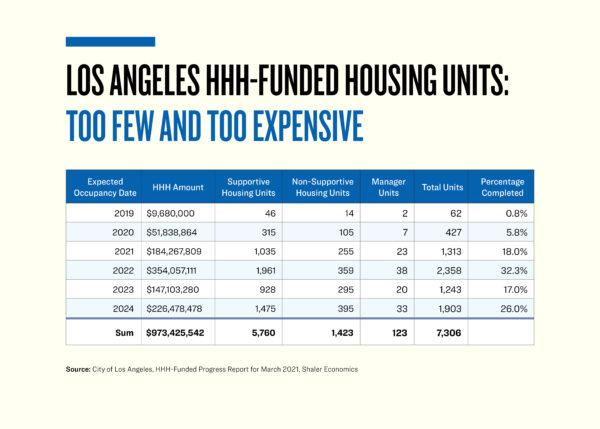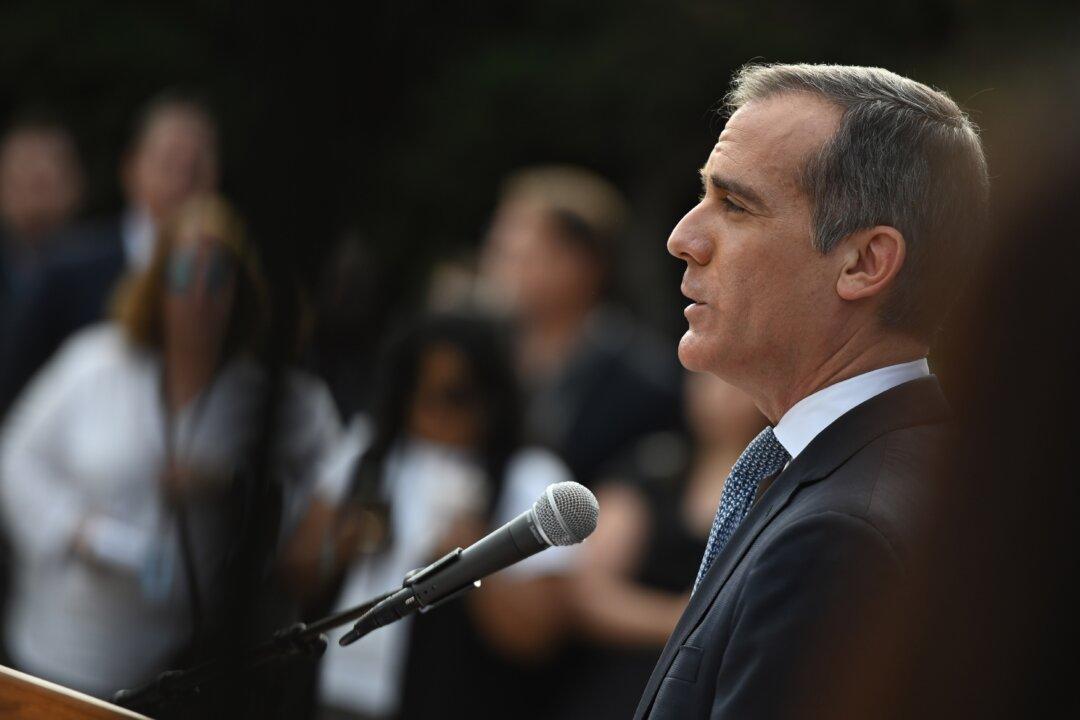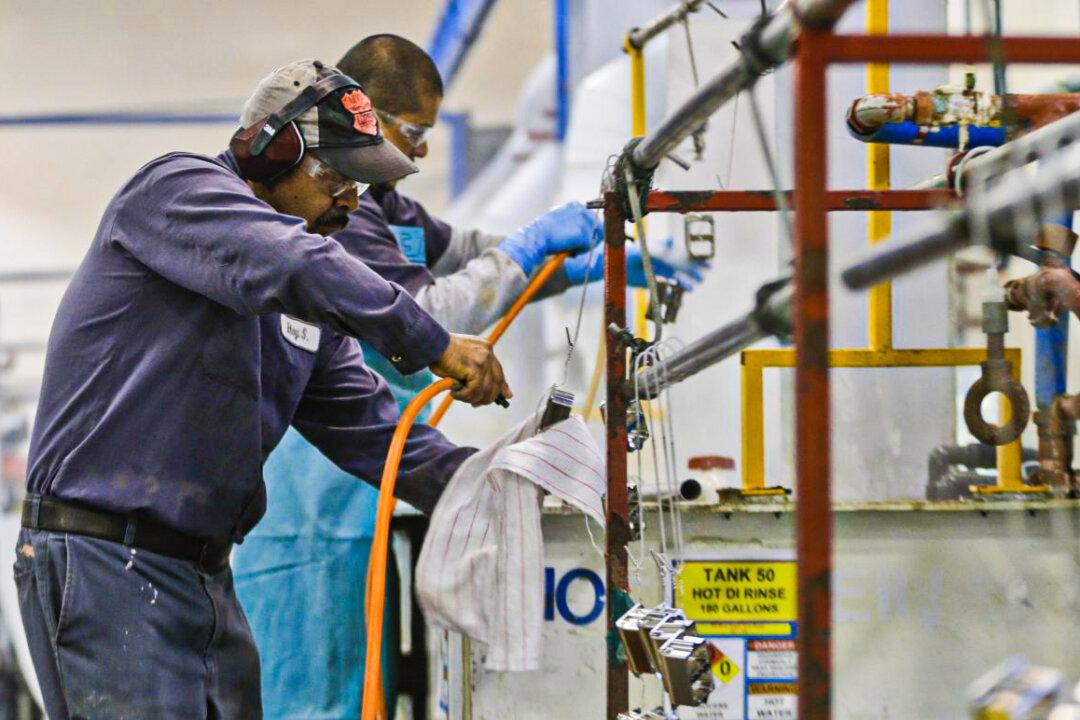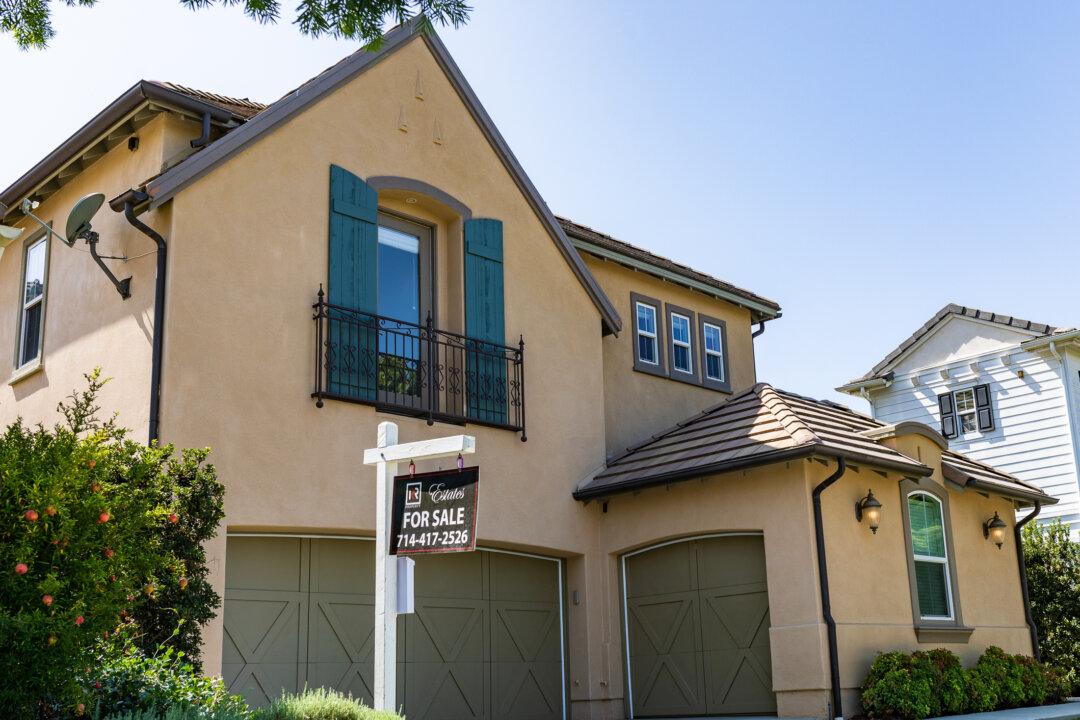Commentary
Between Gov. Gavin Newsom’s recent pre-budget media blitz, President Joe Biden’s “infrastructure plan,” and Los Angeles Mayor Eric Garcetti’s recent State of the City speech, politicians have been making a lot of big claims recently.
In an original economic analysis conducted for The Epoch Times, I analyzed Garcetti’s claims that housing funded by the city’s 2016 HHH bond measure had “turned the corner and beat the hype.” He also claimed during the same April 19 speech that HHH-funded housing is “set to come in at an average of $15,000 cheaper for one thousand units more than originally promised—two years ahead of schedule.”
Indeed, after two to three years of almost no activity, there were 489 housing units built by the end of 2020—a vast improvement from the 62 built by the end of 2019.
Maybe some would agree that the program had finally “turned the corner.”
Whether the program had “beat the hype,” though, would probably rely on whether the mayor’s other claims were true.

For his part, in an op-ed article published March 14—just a few weeks before the mayor’s State of the City speech—LA Controller Ron Galperin shared his own assessment.
Galperin said: “The City of Los Angeles would do well to heed this with Proposition HHH, the $1.2 billion voter-approved, taxpayer-funded bond measure that promised to provide 10,000 units of supportive housing for people experiencing homelessness. More than four years later, some City Hall officials still refuse to acknowledge the program’s flaws and insist that staying the course is the only option. But it isn’t. We must do better than that.”
The “hype” of the HHH bond measure was that the city of Los Angeles would help fund 10,000 new housing units for homeless people within 10 years. The bond measure allowed the city to issue up to $1.2 billion in bonds to subsidize the cost of building those units, which would have been an average cost of $120,000 each.
Competing Views
After weeks of trying to get clarification from the mayor’s office and attempting to understand the differences between the two official’s public statements, The Epoch Times conducted its own analysis.
For the mayor’s claims to be true, the city would be building 11,000 units within eight years of the bond measure being passed, at a cost to the city of just $105,000 per unit.
However, according The Epoch Times’ analysis and shown in the nearby table, the city is only helping build 7,306 housing units within eight years of the bond measure being passed in November 2016.
And within that number, 123 units will be occupied by house managers, meaning just 7,183 will be used to house the homeless.
Furthermore, at a projected cost of $973.4 million, those housing units will cost the city an average of $133,000 per unit, including the units needed to house managers. If we exclude the units to house the managers, each unit to house a homeless person will cost the city an average of $135,500 per unit—that’s $15,500 more than what city voters could have reasonably expected when they voted for the HHH bond measure 4 1/2 years ago.
That $15,500 average cost overrun is substantially different than the “$15,000 cheaper” claim by the mayor during his State of the City speech.
And of course, 7,183 units is about 2,800 units fewer than the 10,000 promised, and about 3,800 units fewer than the mayor claimed on April 19 when he effectively said the city will have helped build 11,000 housing units by the end of 2024.
In his March 14, op-ed article, Galperin got to some of the root causes of the issues. He wrote about the total cost a developer must pay to build housing units for people struggling with homelessness, not just the portion funded by the city.




